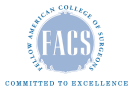Vasectomy Reversal Surgery: A Comprehensive Guide
By Martin Bastuba, MD, FACS
For many men considering a vasectomy reversal, the decision often comes after significant changes in life circumstances, such as remarriage, the desire for more children, or even regret about the original vasectomy. This emotional and physical journey can be overwhelming, as it carries the hope of expanding the family, while also raising questions about the procedure and its success. While the preparation and recovery processes may feel similar to the original vasectomy, there are key differences to keep in mind.
It’s natural to feel apprehensive, especially if many years have passed since the original procedure. The best way to overcome this uncertainty is through a clear understanding of what to expect, along with open discussions about the procedure, its risks, and its benefits. This guide aims to address common concerns and help you make an informed decision with the expert guidance of Dr. Martin Bastuba, a renowned vasectomy reversal surgeon with decades of experience. Dr. Bastuba’s high success rates and compassionate approach can provide reassurance and ensure the best possible outcome for your family planning journey.
Key Factors for Vasectomy Reversal
- Why Get a Vasectomy Reversal
- How Vasectomy Reversals Work
- How to Prepare for Vasectomy Reversal Surgery
- Recovering After Vasectomy Reversal Surgery
- Vasectomy Reversal Risks
- Vasectomy Reversal Success Rates
- Vasectomy Reversal Cost
- Alternatives to Vasectomy Reversal and Backup Approaches
- Choosing the Best Vasectomy Reversal Surgeon
- Frequently Asked Questions
Why Get a Vasectomy Reversal
Vasectomy reversal is a meaningful option for men who wish to regain fertility, often due to life changes such as remarriage or a renewed desire for children. The procedure can allow natural conception without the need for assisted reproductive technologies. However, there are many factors to consider, including the time since the vasectomy, overall health, family planning goals, and the emotional aspects of this decision, as the success of the procedure may not always meet expectations.
The Vasectomy Reversal Decision Process
How Vasectomy Reversals Work
A vasectomy reversal is a surgical procedure that reconnects the vas deferens, allowing sperm to flow through the reproductive tract for a chance at natural conception. The procedure involves precision techniques to ensure patency (i.e., the return of sperm to the ejaculate) and maximize fertility potential. Depending on factors such as prior vasectomy type and time since the procedure, your doctor will choose the best method.
The vasectomy reversal procedure is typically performed in an outpatient surgery center or hospital. It is done under general anesthesia to ensure you remain pain-free and still while the surgeon works with delicate microsurgical instruments (i.e., fine, specialized tools used for precise surgery under a microscope). Immediately after surgery, the incisions are covered with bandages, and the outer layer is sealed with a medical adhesive. The incision is closed in multiple layers, and you will be instructed to wear supportive undergarments and apply ice to reduce swelling. Mild soreness is expected, and dissolvable stitches will naturally absorb within seven to ten days.
The Vasectomy Reversal Procedure
Vasovasostomy Vs. Vasoepididymostomy
There are two main surgical techniques for vasectomy reversal:
- Vasovasostomy reconnects the severed ends of the vas deferens directly, commonly used when no blockages are found further up.
- A vasoepididymostomy is more complex and is chosen if there’s a blockage closer to the epididymis (i.e., the part of the male reproductive system where sperm is stored). This technique connects the vas deferens directly to the epididymis and may be recommended if years have passed since the vasectomy, sperm is not present, or a vasovasostomy is unlikely to work.
Sometimes a combination of the two surgical techniques is needed – a vasovasostomy on one side and a vasoepididymostomy on the other. The decision to perform a vasovasostomy versus a vasoepididymostomy depends on whether sperm are seen when fluid from the vas deferens is analyzed at the time of surgery.
How long does the vasectomy reversal surgery take?
The procedure generally takes between two to four hours, depending on the complexity and technique used. Vasovasostomy tends to be quicker than vasoepididymostomy, which requires more intricate microsurgical skills. Most patients return home the same day, with comprehensive post-operative instructions to ensure a smooth recovery and the best possible outcome for restored fertility.
How to Prepare for Vasectomy Reversal Surgery
Preparing for your vasectomy reversal is essential to ensure both a smooth procedure and optimal recovery. In the weeks leading up to surgery, there are a few practical and medical steps to complete, including:
- Take care of necessary payments for hospital, anesthesia, and surgical fees, and sign all consent forms.
- Complete any lab tests your doctor requests, ideally at least two weeks before your procedure date.
- Make sure to arrange for a responsible adult to drive you home, as the effects of anesthesia will make it unsafe to drive.
- As an additional measure, consider storing sperm retrieved during the surgery. This option serves as a safeguard for future fertility should natural conception take longer than expected, providing reassurance for you and your family planning goals.
A few days before surgery, you’ll need to temporarily adjust your medication regimen to prevent excessive bleeding. Avoid any blood-thinning agents such as aspirin, Motrin, Advil, or naproxen, as well as herbal products like vitamin E and fish oil. Tylenol is generally safe if needed, but it’s best to confirm all medications with your doctor. If you’re on prescription blood thinners like Coumadin, consult your prescribing doctor for specific instructions well in advance. On the day before surgery, do not eat or drink anything after midnight to ensure a safe anesthetic experience.
Recovering After Vasectomy Reversal Surgery
Recovery after a vasectomy reversal is straightforward but requires attention to ensure proper healing. Most patients experience mild discomfort and swelling, which can be managed with prescribed pain medication and ice packs.
Resting for the first few days and avoiding strenuous activities and heavy lifting for about two to four weeks will aid in healing and protecting the surgical site. You must also abstain from all ejaculation and sexual activity for 28 days post-surgery, as this can tear the sutures. Wearing supportive underwear and following your post-operative instructions can further reduce swelling and discomfort. Your doctor will also schedule follow-up appointments to monitor recovery and check for the return of sperm flow.
Vasectomy Reversal Risks
As with any surgery, vasectomy reversal carries some risks, though serious complications are rare. Common risks include infection at the surgical site, bleeding, and temporary discomfort or swelling. These can typically be managed with antibiotics, rest, and ice packs, but it’s important to follow all post-operative care instructions to minimize these risks.
In some cases, scar tissue may develop around the reconnected vas deferens, potentially blocking sperm flow. While this is uncommon, it may impact the success of the reversal, and additional treatment may be required. Another possible risk is the formation of a fluid buildup, called a sperm granuloma, which is generally harmless but can sometimes cause discomfort.
Although vasectomy reversal is a safe and effective procedure, it does not guarantee restored fertility, as factors such as time since the original vasectomy and age can influence success. Discussing these risks and considerations with your doctor can help you understand what to expect and make informed decisions about your treatment plan.
Vasectomy Reversal Success Rates
Success after a vasectomy reversal is primarily determined by the presence of sperm in the semen. Success rates can vary based on factors such as the time since the original vasectomy, the age and health of both partners, and the surgical technique used. Generally, the sooner the reversal is performed after the vasectomy, the higher the chances of success. The average patency rate is around 70%, with a pregnancy success rate of 55%. However, with an experienced surgeon, such as Dr. Martin Bastuba, patients can expect a patency success rate of 98% and pregnancy success rates ranging from 65-75%.
Vasectomy Reversal Success Rates
When is success determined after a vasectomy reversal?
Around six to twelve weeks post-surgery, a semen analysis is conducted to check for the presence of sperm. While some patients may have sperm in their semen within a few weeks, it can take several months for others, depending on healing and individual factors.
A comprehensive sperm analysis (CSA) is performed two and four months after the surgery to check for the presence of sperm. While some men may detect sperm in their semen within a few weeks, it can take several months for others, depending on individual healing and sperm production. After each CSA, a lab technician will explain the results, and your care team will support you throughout the process to ensure the best outcome.
Vasectomy Reversal Cost
The cost of a vasectomy reversal at Male Fertility Specialists includes the surgeon's fee, anesthesia, and surgery center facility charges, totaling about $8,628, though additional fees may apply depending on individual circumstances. We also offer free consultations, in-house financing options, and military discounts.
Alternatives to Vasectomy Reversal and Backup Approaches
While vasectomy reversal is a viable option for regaining fertility, there are alternatives for those who may not be candidates for surgery. Sperm retrieval techniques, such as sperm extraction from the epididymis (MESA) or testicular tissue (TESE), combined with in vitro fertilization (IVF), offer backup options for conception. These methods can be used if the reversal is unsuccessful or not recommended.
Vasectomy Reversal Alternatives
Choosing the Best Vasectomy Reversal Surgeon
Selecting the right vasectomy reversal surgeon is essential for the best outcomes. Look for a surgeon with extensive experience in microsurgery, a strong track record of successful procedures, and a personalized approach to patient care. It’s important to consider their expertise in fertility restoration, success rates, and communication skills. Scheduling a consultation to discuss your specific needs and expectations is a great first step.
How to Choose the Best Vasectomy Reversal Surgeon
Frequently Asked Questions
Candidates for vasectomy reversal are typically men in good overall health, with a clear understanding of the procedure’s potential outcomes. Factors like the time since the vasectomy, the presence of healthy sperm, and the age of both partners are important. Consulting with a skilled surgeon can help assess your individual case and determine the likelihood of success.
Yes, a vasectomy reversal can still be done many years after the procedure. However, the success rate may decrease as time passes. Typically, reversals performed within 10 years of the vasectomy have the highest success rates, but it’s still possible for successful outcomes even if the vasectomy was performed decades ago.
Yes, a vasectomy reversal can improve fertility even if you've had prior fertility issues, but success depends on the cause of the original infertility. If the infertility was due to the vasectomy and there are no other underlying issues, the procedure may restore sperm flow and fertility. However, if previous fertility problems were unrelated to the vasectomy, it’s important to discuss other possible treatments or options with your doctor for a comprehensive approach.
No, you don’t need to go back to the original provider. While some may choose the same clinic, many men seek out a specialist with expertise in vasectomy reversals. It’s important to select a skilled surgeon who focuses on fertility restoration, ensuring the best possible outcome regardless of where your original vasectomy was performed.
Vasectomy reversals sometimes fail if there is an underlying issue with the testicle, which cannot be recognized during surgery, or if a blockage develops sometime after surgery. Up to 10% of patients can scar down following a successful vasectomy reversal. Dr. Bastuba encourages all patients to recover sperm at the time of the vasectomy reversal, which can be frozen and used as a backup if there is a failure.
Why Choose MFS and Dr. Martin Bastuba
Dr. Bastuba is dedicated to providing expert care with a focus on achieving the best possible outcomes. With a vasectomy reversal success rate of 98%, he ranks among the highest in the nation. Unlike most urologists who perform only a few reversals per year, Dr. Bastuba has performed two to five per week for decades, bringing unparalleled expertise to every case.






